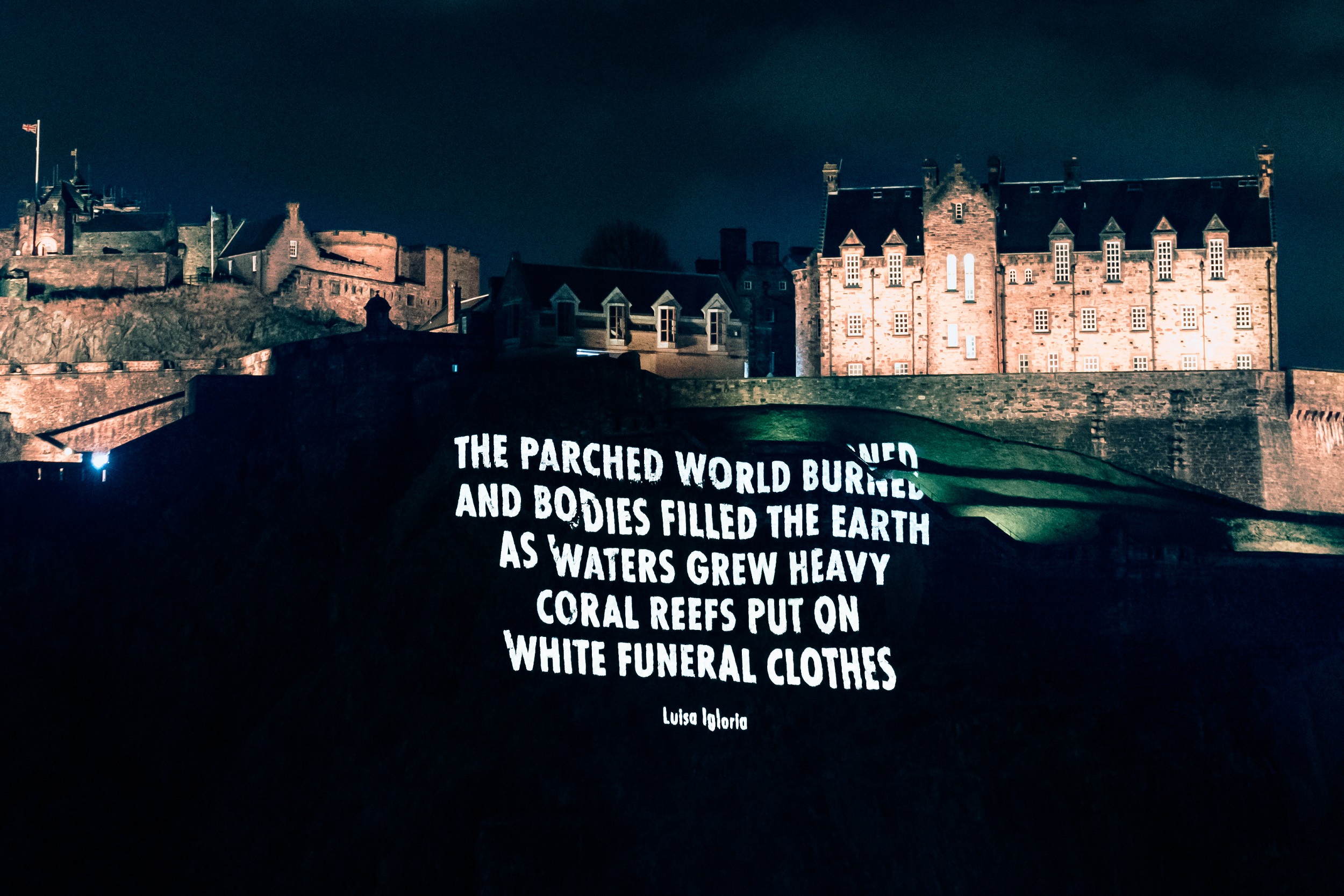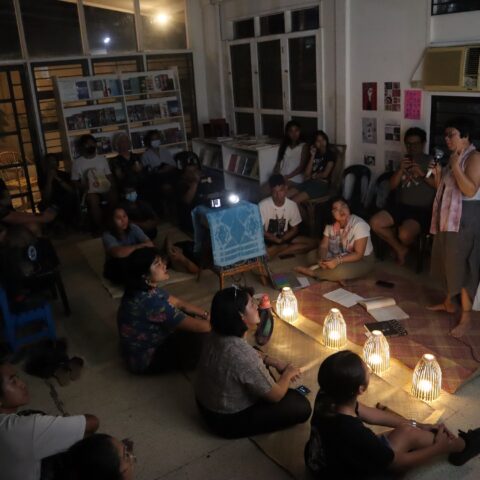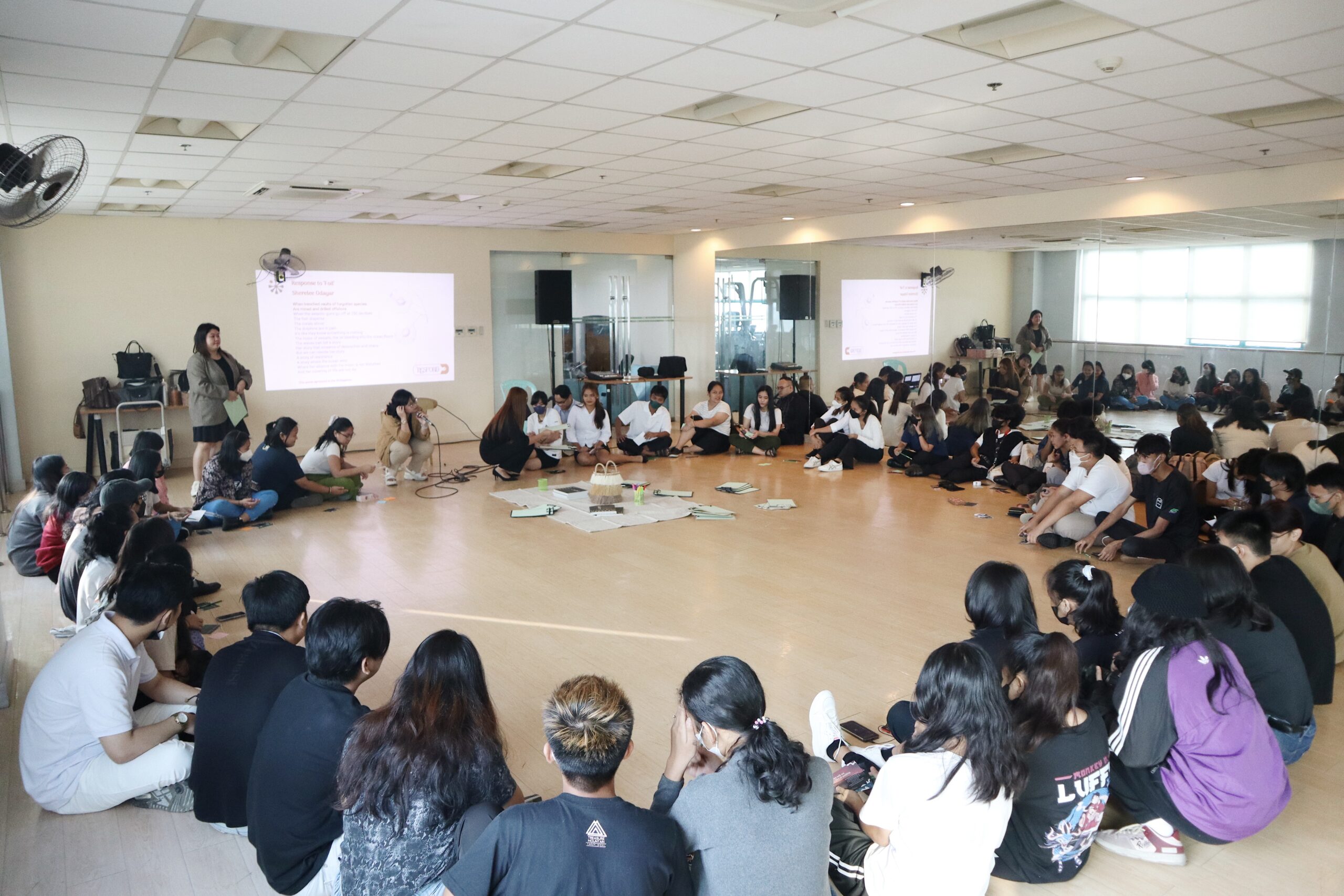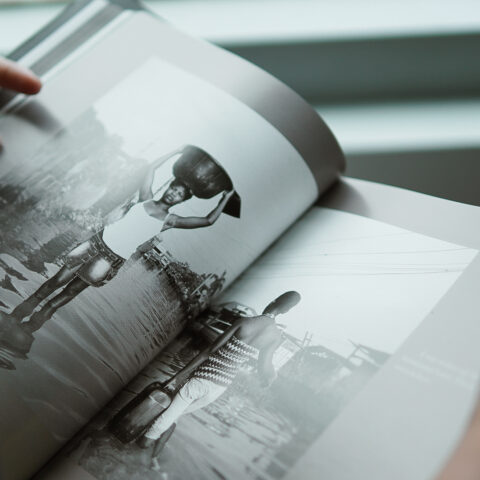Cover Photo: HURT EARTH light projections by Jenny Holzer, in Edinburgh Castle, Scotland, UK. Text: Writings by Luisa A. Igloria for “Midnight Climate Survival” © 2021 by the author, for Harvest Moon: Poems and Stories from the Edge of the Climate Crisis. Photo © 2021 Jenny Holzer, member Artist Rights Society (ARS), NY
Scroll down to watch the recording: Agam Agenda and CVF’s Keynote session at the 6th Gobeshona Global Conference, including poetry readings from Kathy Jetn̄il-Kijiner, Malebo Sephodi, and Yuvan Aves.
On March 28, 2022, the Agam Agenda and Climate Vulnerable Forum (CVF) organized a keynote session on the role of culture for climate action, as part of the 6th Gobeshona Global Conference, with this year’s theme of Locally Led Adaptation Action.
About the event
The keynote session brought together frequent collaborators of the Agam Agenda: Marshall Islander poet, performance artist, educator, and CVF Ambassador for Culture, Kathy Jetn̄il-Kijiner; African feminist, artist, and community worker Malebo Sephodi, and Indian writer, naturalist, activist, and teacher Yuvan Aves. They were joined by Agam Agenda’s Lead Strategist for Creative Collaboration and CVF Public Mobilization Coordinator, Padmapani L. Perez.
Together they shared their perspectives as cultural workers on climate change solutions. They also read poetry from the global poetry/arts campaign, When Is Now: Seeding Climate Action through the Arts, led and mobilized by the Agam Agenda and CVF.
Key takeaways
The following is an excerpt from the transcript where Padmapani L. Perez summarizes the session:
Padmapani L. Perez: Wow, Kathy, I love that. “Poetry leads us to the wounds”, or keeps us attending to the wounds. This has been an amazing conversation. We all learned so much from you, Kathy, and Yuvan, and Malebo. This is what I picked up from the three of you:
1) There are specific lands, waters, communities, and experiences that one cannot know without directly knowing them. Poetry and art show us ways that we can better understand.
One is that there are specific lands, waters, communities, and experiences that one cannot know without directly relating with them. [This is] the importance of relationality.
And aside from poetry or art “pointing us to the wounds”, they can also show us ways we can better understand other people and places.
2) Arts and culture have a pivotal role in shaping conversations on climate change. There is a heart and soul to our lived experiences, which poetry and art are able to embody.
Poetry and art can create the feeling of interconnectedness that I believe will help us help each other through the climate crisis. So many people are talking about how we need to stand in solidarity with each other. But it seems like something that’s so hard to grasp—how do we actually do that? Arts and culture have a pivotal role in doing that.
In shaping conversations on climate change, all three of you have spoken of how there is a heart and soul to our experiences of the crisis that art or poetry can embody and also convey. And so art is in itself information and data—I love that. And although artists are considered marginal to the “real” climate work and negotiations, it is one of the most effective ways of connecting people, increasing involvement, and galvanizing action.
3) As a cultural campaign for climate action, When Is Now celebrates plurality in communities. It shows how we can quietly yet powerfully listen and respond to each other’s experiences of the climate crisis.
And finally, it was so good to hear from you, Malebo, about how When Is Now celebrates plurality in cultures and communities. It shows, as Kathy said, how we can quietly and powerfully listen and respond to each other’s experiences.
So I want to share that When Is Now is going to continue through 2022: the campaign will be active all the way up to COP27, supporting the CVF’s agendas on loss and damage through culture, arts, and public mobilization.
And so this is an open invitation to everyone that’s here listening today, to be part of When Is Now. Join our global web of poetry and murals and music and performance. Visit whenisnow.org to see how you can participate.
Thank you so much, Kathy, and Yuvan, and Malebo for all that you’ve shared this afternoon. Plenty of food for thought that we’re all going to be digesting for weeks to come, I think, and as we go forward in our work for climate action. Thank you, everyone.




